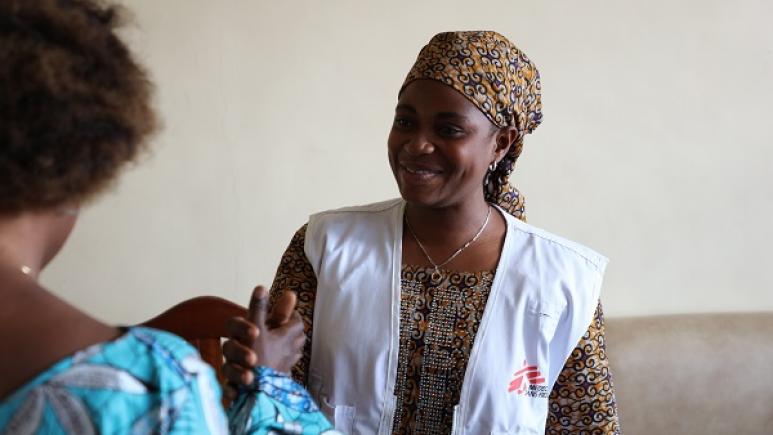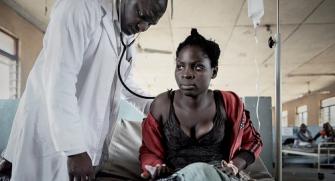What impact(s) do differentiated antiretroviral delivery models have on users?
Beginning 2015, the World Heath Organization supported the development of so-called differentiated service delivery models for the delivery of antiretroviral (ART) treatment.In these person-centered approaches, care, treatment and benefits are adapted to people's lifestyles to minimize their impact.They allow patients with controlled disease to reduce clinic visits, travel distance for treatment refills, and transportation costs, while reducing the burden on the health care system. These differentiated models are part of the "test and treat" strategy rolled out by the WHO since 2016 to provide ARV treatment to all people living with HIV upon diagnosis. They can take many forms, but need to be evaluated, including retention-in-care, adherence to treatment, quality of life, depending on contexts, individuals and models.
Goma: an urban site and a community-based model of ARV delivery
Goma is the capital of North Kivu province in the Democratic Republic of Congo and has a population of over one million. MSF supports the Ministry of Health in the care of people living with HIV and has implemented a community-based ART delivery model. Each of the 10 people who make up a community group takes turns collecting drugs from the clinic and distributing them to other group members. Unlike the clinic model, where the person must come in every 3 months to renew their ARTs, with or without a consultation by a health professional.
"We were interested in evaluating this model because it has different characteristics from those generally implemented in other settings. Until now, the groups set up had six people and were set up in rural areas," says Jihane Ben Farhat, epidemiologist at Epicentre and principal investigator.
Among the 331 of the 1,950 people included in the study coordinated by Franck Lutu (now MSF medical officer) who opted for community group delivery, 33% had been on ARTs for more than 10 years, compared to 14% in the classic delivery model called clinical.
At 6 months, 98% and 94% of individuals were still in the community-based and clinical delivery models, respectively. Coverage and viral suppression rates were similar in both models. At one year, a greater decrease in retention was observed in the clinical model and the risk of having people die, be lost to follow-up, or be displaced was reduced by 57% in the community group compared to the clinical model.
"The group dynamic certainly creates a protective environment where patients discuss their problems, share their experiences and support each other," says Jihane Ben Farhat. And this reinforces adherence to treatment, as explained by a 50-year-old man who is part of a group: "The advice and solidarity between group members gives me hope to live and encourages me to take the medication.”
Moreover, most of the participants judged the reception, the functioning, the renewal of ARTs within the group and the exchanges between the members to be satisfactory. As for the avenues for improvement, they focus on further decentralization, including the availability of long-acting injectable drugs. "Because drinking the drugs every day hurts your stomach," said a 57-year-old woman. It would also be interesting to explore the reasons why eligible people living with HIV do not choose the community delivery mode and prefer to continue their follow-up in the clinic.
Kasese: a community of itinerant fishermen
Since 2017, MSF has supported the Uganda Ministry of Health in rolling out differentiated service delivery models in 3 districts. Among the populations monitored are fishing communities that move along Lakes George and Edward in search of fish schools. In 2016, Epicentre had highlighted that a significant proportion of people living with HIV in this population were already diagnosed and on treatment. However, the viral load suppression rate, one of the key indicators in patient management, was only 67% and this was most likely due to poor treatment adherence.
"Mobility of the fisherfolk community interrupts access to ART delivery sites and appears to be the main barriers to treatment adherence," explains Jihane Ben Farhat, Principal Investigator of the study. So we evaluated the fast track drug refill with a recovery of ARVs for 3 to 6 months at health facilities, and the community-based model with one person delivering ARTs in a group of six who take turns picking up the treatments every month."
The first finding was that among the 1,767 people enrolled in the study coordinated by epidemiologist Carol Liu, slightly more opted for the fast-track drug refill model. One of the reasons given for this choice was the loss of privacy associated with group membership. The profiles of those who chose the community-based model were also slightly different: older, having started treatment more than a year ago, and with shorter travel times to health facilities.
"Retention in care was high in both models. However, there was better retention in the community-based model for people with a long commute to the health center than in the other model," summarizes Jihane Ben Farhat.
Among people with viral load test results, more than 97% had a suppressed viral load within the first two years, regardless of the delivery model, illustrating the success of this program.
While both models have high satisfaction ratings, the reasons vary from one model to another. Community group members emphasized the availability of health checks, knowledge sharing, reduced travel costs, and the social and financial support provided within their groups.
"I feel I am okay [in the group] because when I get something that I do not understand, our team leader comes in immediately to make me understand what is going on; she advises me, and directs me on the right path to follow," said a man in one of the groups.
The reduction in the frequency of visits to health facilities is seen as a time-saver.
As a 38-year-old man in a community group said, “Even when I am absent, I am able to receive my drugs, and another thing is that, when I’m busy in my business of fish, they still bring my drugs to my home. That is why I like the group.”
The other model also brings benefits, including greater confidentiality than in groups, the ability to consult directly with health care workers at each refill, the convenience of refills, especially for people living near health facilities, and flexibility in the refill schedule to accommodate professional and personal requirements.
As one fishmonger who attends a health facility in Katunguru explains. " Because they do their work in a good way, and they give attention to their clients, so, that’s why I can’t move away from here."
Despite the progress made in recent years in the fight against the HIV epidemic, a one-size-fits-all approach to care is no longer sufficient. To continue to make progress, we must be able to reach all populations, even the most vulnerable, and offer them treatment and care delivery methods that are adapted to their lifestyles, whether they are children, adolescents, itinerant or marginalized populations... As shown by the two studies conducted by Epicentre in Uganda and the DRC on very different populations, adapting delivery to the lifestyles of people living with HIV favors retention in care, suppression of viral load and improved acceptability. The growth of these person-centered models that tailor care and treatment to enable patients to lead normal lives must therefore continue, while evaluating their efficiency in each new setting and population.










